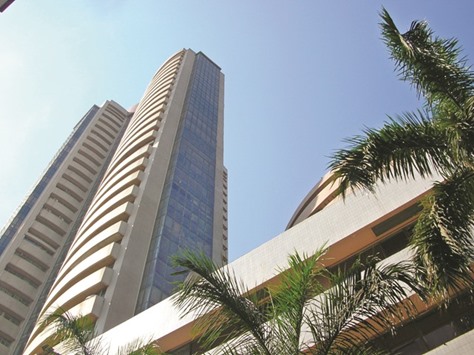Besides, massive depreciation in the rupee, which touched its new intra-day record low of 68.86 to a US dollar, and logjam in parliament over the demonetisation move eroded investors’ confidence.
The key Indian indices closed with losses of more than half a per cent each, as banking, automobile and healthcare stocks witnessed heavy selling pressure.
The wider 51-scrip Nifty of the National Stock Exchange (NSE) receded by 67.80 points or 0.84% to 7,965.50 points.
The barometer 30-scrip sensitive index (Sensex) of the BSE, which opened at 26,049.14 points, closed at 25,860.17 points – down 191.64 points or 0.74% from the previous close at 26,051.81 points.
The Sensex touched a high of 26,049.14 points and a low of 25,810.97 points during the intra-day trade.
In contrast, the BSE market breadth was tilted in favour of the bulls – with 1,341 advances and 1,215 declines.
On Wednesday, the equity markets closed in the green due to positive global cues, coupled with short covering and value buying.
The barometer index was up by 91.03 points or 0.35%, while the NSE Nifty edged up by 31 points or 0.39%.
“Markets ended in the red with losses of around 0.7-0.8%. Global cues were mostly mixed, and F&O (futures and options) expiry rollovers made the markets volatile,” Astha Jain, Senior Research Analyst at Hem Securities, told IANS.
“The minutes of the US Federal Reserve, which were released on Wednesday evening, suggested a possible rate hike next month. This triggered a steep decline in Asian and domestic markets.”
In additon, the Indian rupee plunged to its new record low of 68.86 to a US dollar during the mid-afternoon trade session due to heightened chances of a US rate hike and continued outflow of foreign funds from equities and debt markets.
The Indian rupee weakened by 17 paise to close at 68.74 against a US dollar from its previous close of 68.57 to a greenback
“Along with the domestic cue of demonetisation, the possible Fed rate hike in December will continue to affect the USD/INR in the upcoming sessions,” Jain added.
According to Dhruv Desai, director and chief operating officer of Tradebulls, overall selling pressure led the key equity indices to close in the red.
“IT stocks managed to hold the early gains tracking firm USD/INR futures prices,” Desai said.
“Banking, pharma, auto, oil-gas, aviation and textile stocks traded lower on selling pressure, while media-entertainment, FMCG, cement and power stocks also traded lower on selling pressure from traders.”
In terms of investments, provisional data with exchanges showed that the foreign institutional investors (FIIs) sold stocks worth Rs20,101.50mn, whereas the domestic institutional investors (DIIs) purchased scrips worth Rs16,482.20mn.
Since the November 8, when the government announced a move to demonetise higher denomination currency notes and the surprise victory of Republican Donald Trump in the US Presidential election, the Indian equity markets have seen foreign fund outflows worth Rs155,798.10mn (from November 9-24).
Sector-wise, the S&P BSE banking index plunged by 308.51 points, followed by the automobile index, which receded by 263.97 points, and the healthcare index declined by 159.33 points.
On the other hand, the S&P metal index surged by 124.60 points, followed by the IT index, which rose by 114.78 points, and the Teck (technology, media and entertainment) index, which edged up by 37.51 points.
Major Sensex gainers yesterday were: Power Grid, up 1.92% at Rs185.35; Bajaj Auto, up 1.69% at Rs2,639.70; Tata Steel, up 1.50% at Rs398.25; Tata Consultancy Services (TCS), up 1.38% at Rs2,186.50; and Infosys, up 1.33% at Rs932.70.
Major Sensex losers were: Tata Motors, down 3.89% at Rs453.05; Axis Bank, down 2.59% at Rs468; Sun Pharmaceuticals, down 2.49% at Rs683.60; Mahindra and Mahindra (M&M), down 2.41% at Rs1,164.50; and Gail, down 2.18% at Rs403.30.



